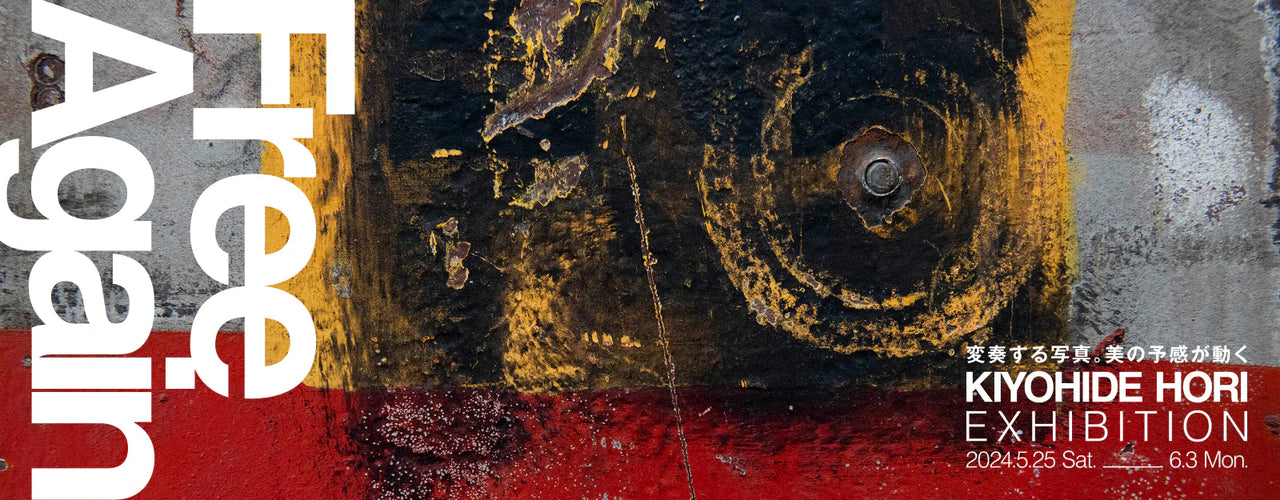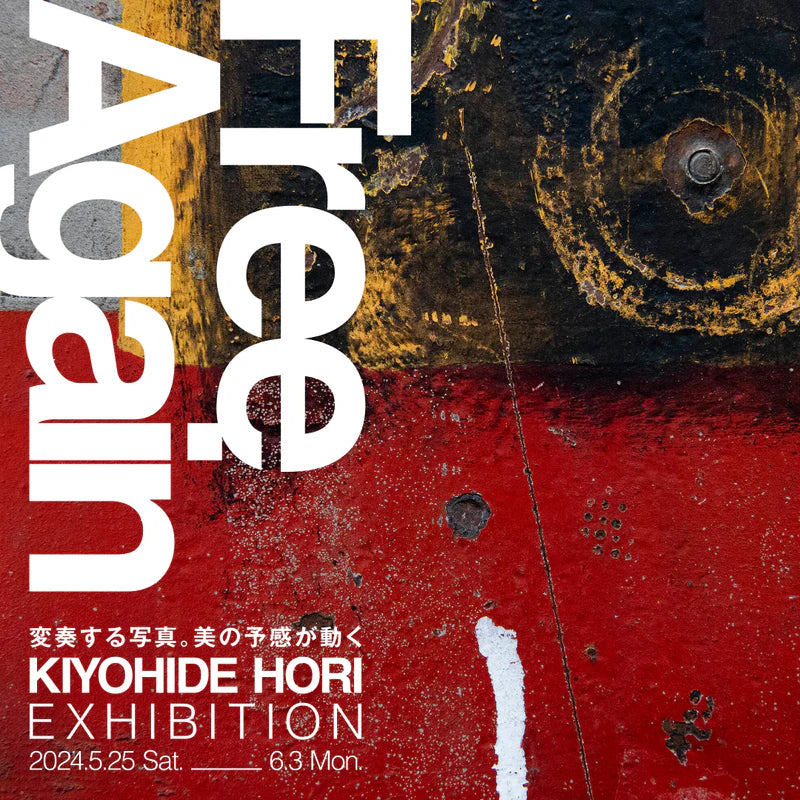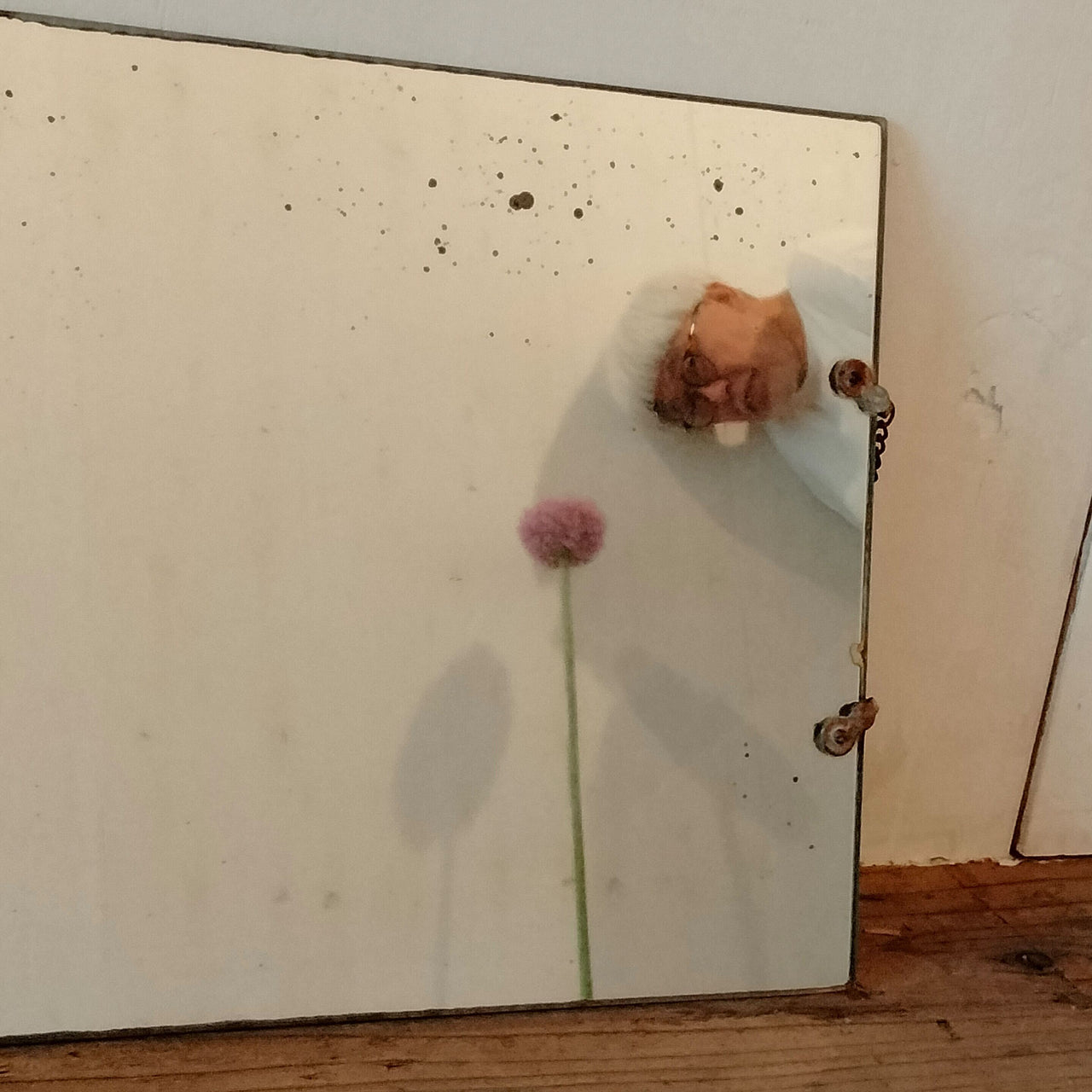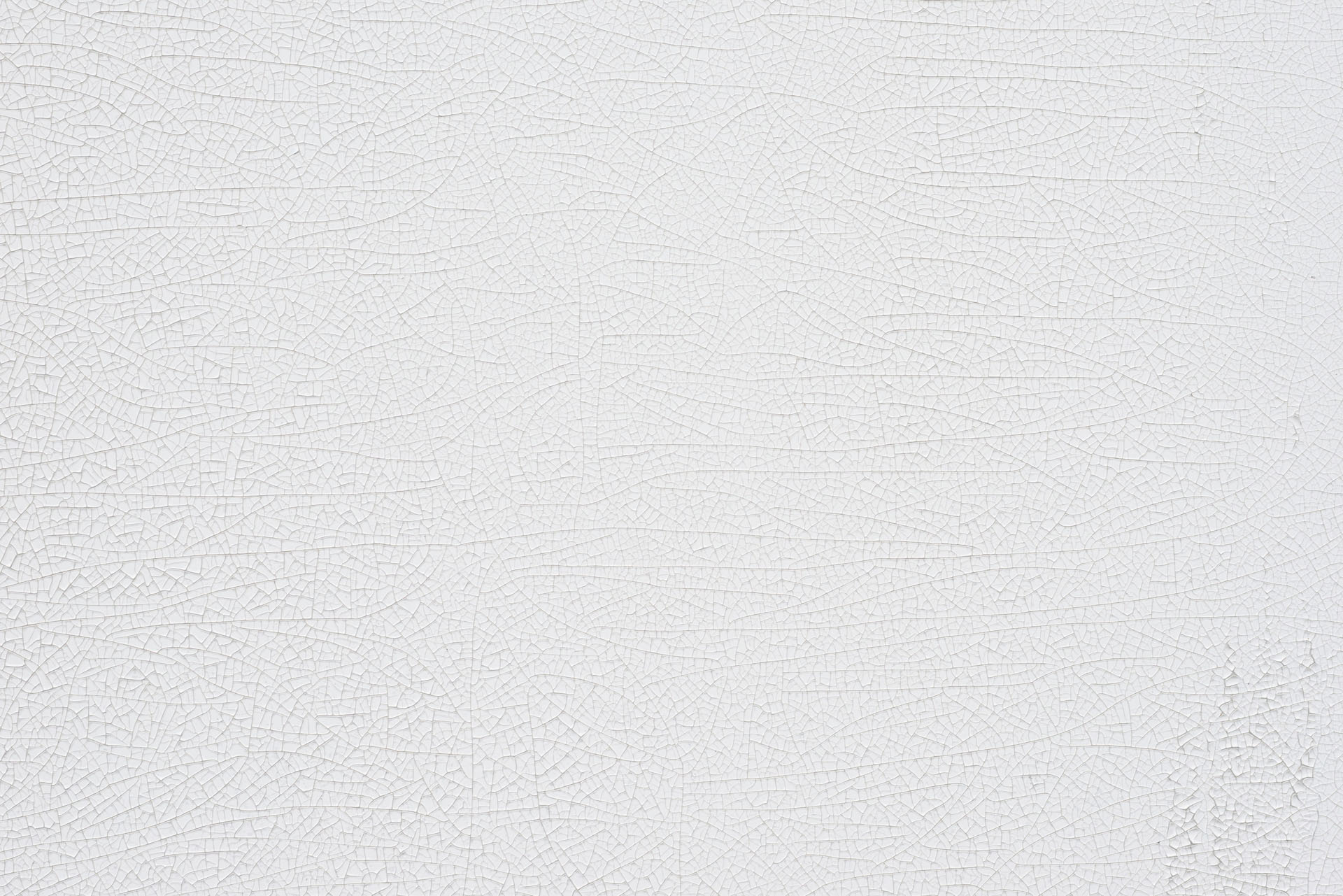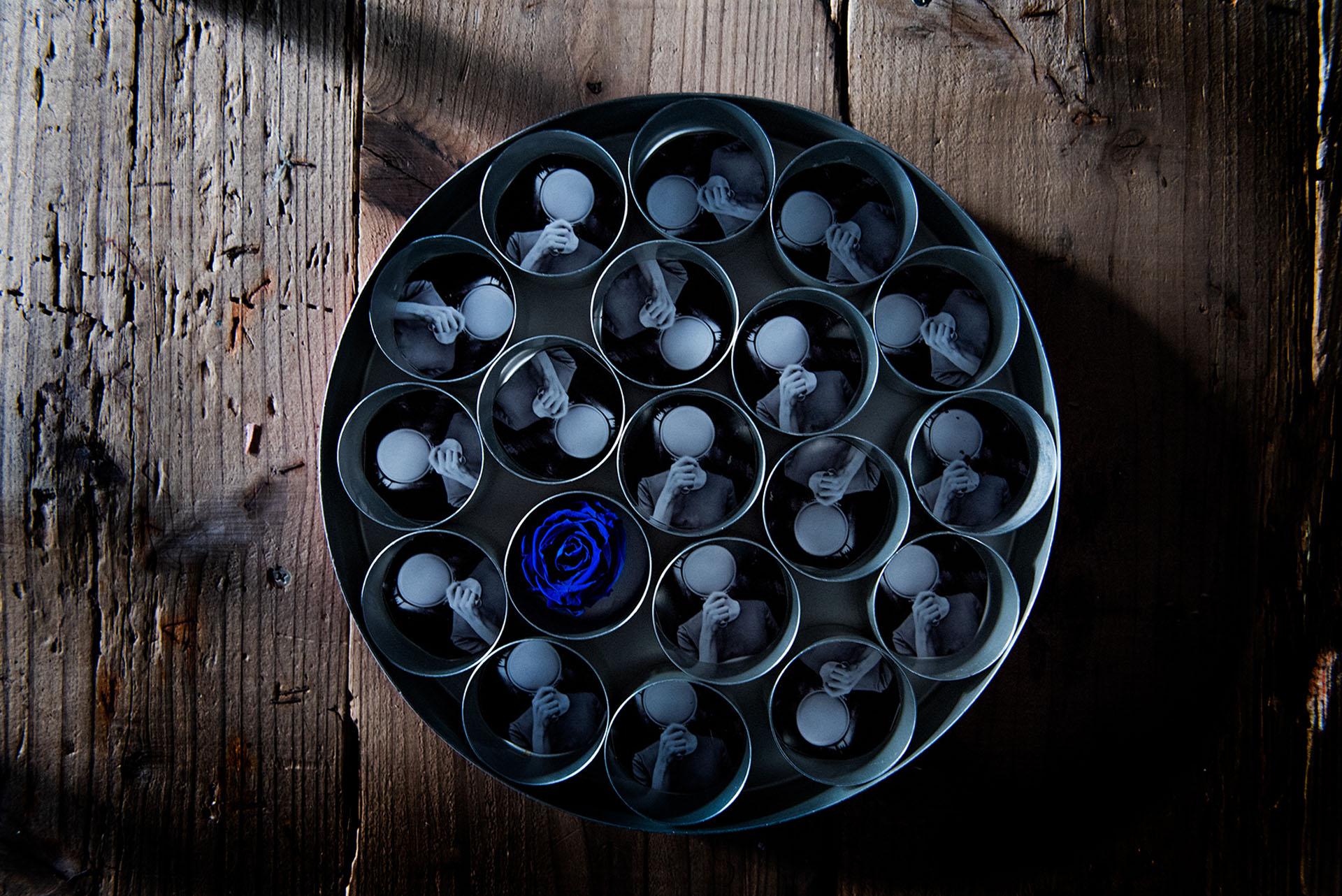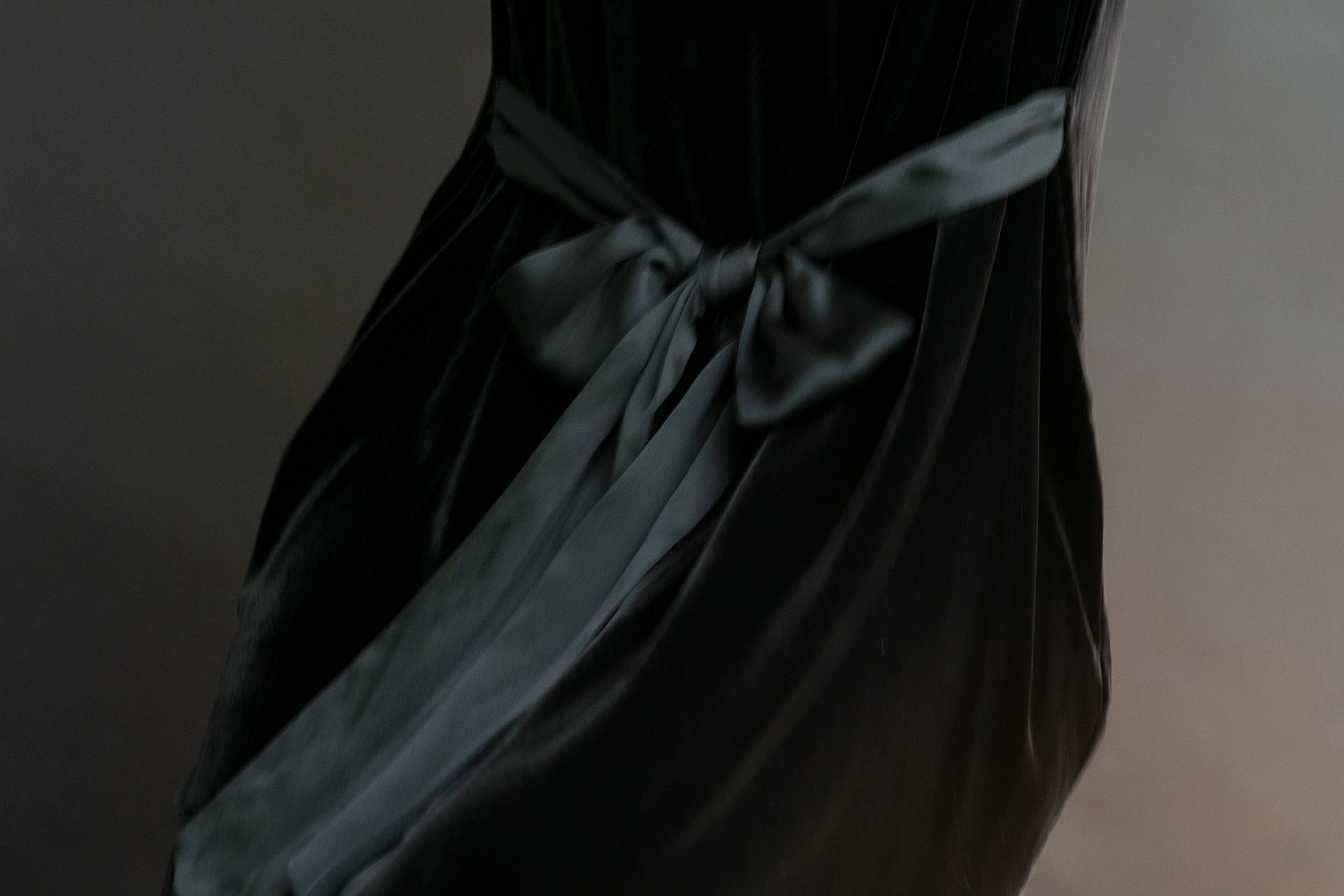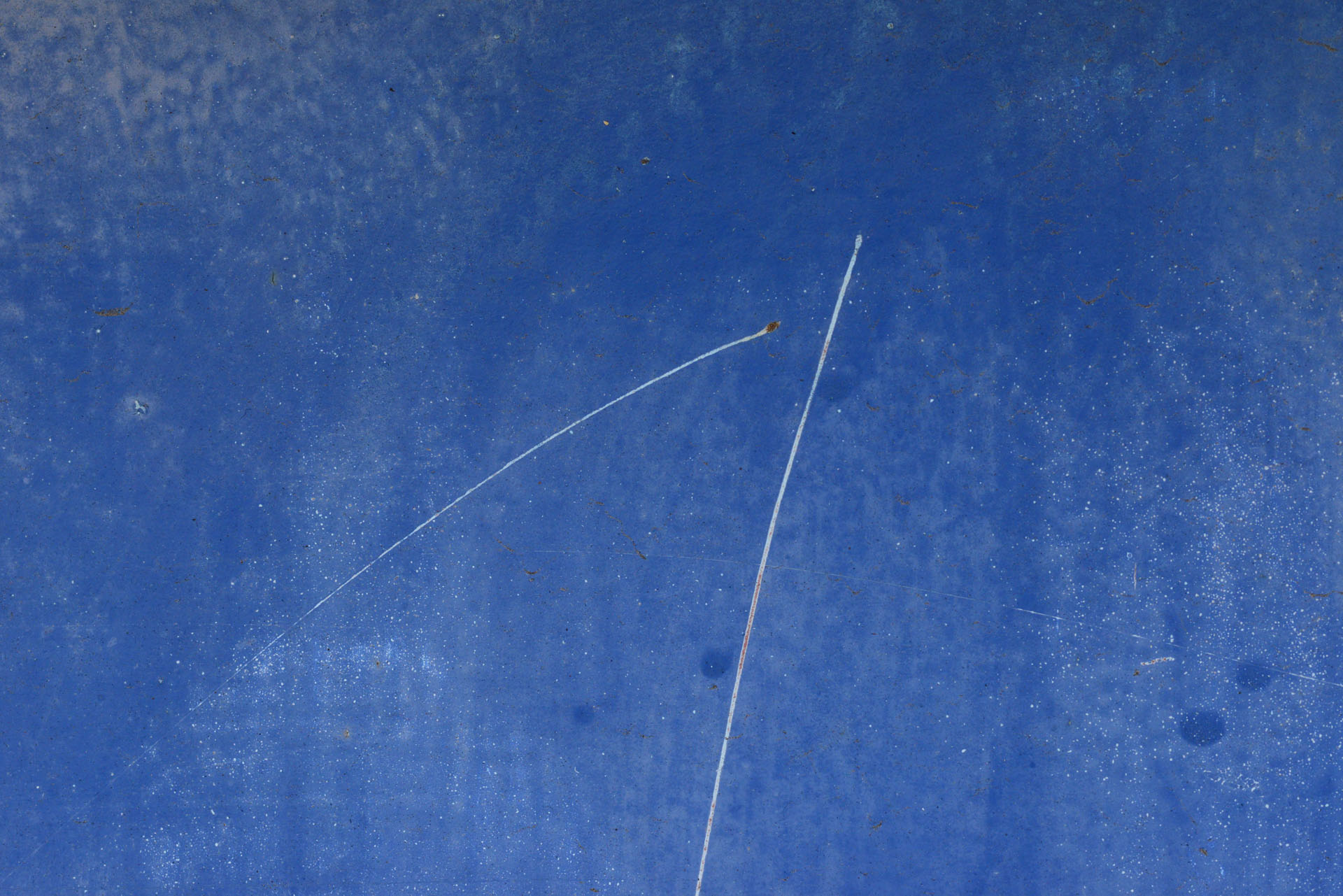YUGEN Gallery will be holding Kiyohide Hori's solo exhibition "Free again" from Saturday, May 25th to Monday, June 3rd.
Art creates the rules, but the rules do not create art.
Claude Debussy
A small container containing a photograph of a person holding a mirror, and a single blue rose. Densely arranged like two mirrors, the image repeats and expands infinitely. A naked woman lying in ruins, and a sepia-toned photograph of a woman alone, as if in a distant memory. The exhibition is made up of around 30 silver halide and digitally printed photographs by photographer Hori Kiyohide, as well as three-dimensional works created to resemble collages of objects and photographs.
"Free Again" is taken from the song of the same name by Alex Chilton. "When I replaced the word "she" in the lyrics with a word I have experienced, it fit my own feelings. With the advent of the internet and other virtual cross-cultures, changes in the quality of information and values, it's time to say goodbye to the two photographic conventions of America and Japan," he said. His intention to let go of stereotypes, human relationships, and the self-consciousness that has bound him, and to draw in new rules as a photographer, is apparent in his art.
Artworks born from chain reactions
Hori Kiyohide came to the United States in 1991. After studying photography at the International Center of Photography (ICP) in New York, he began his career as a photographer. He became known for his portraits of historical artists who influenced him, such as poet Allen Ginsberg, Dennis Hopper, Robert De Niro, and Yoko Ono, and after returning to Japan in 1997, he has taken many portraits, mainly in the fashion and music fields.
In recent years, he has focused on creating works that address the theme of "Who am I?" He has presented narrative works such as the "re;HOWL" series, which shows the irony of modern society, which he undertook after the Great East Japan Earthquake, and the "RED" exhibition, which was a multi-layered composition of works that were strongly influenced by Surrealism.
Hori says that what he likes more than photography is "disassembling things." He picks up industrial products, household items, and weathered waste materials that he comes across by chance, disassembles them, connects them to objects, and combines them with photographs. He will also exhibit the works he creates every day, "without showing them to anyone and without being bound by anything."
Hori was inspired to become a photographer by the 20th century's leading portrait photographer, Yusuf Karsh. Hori admired him so much that he even had his portrait taken by him, but he decided to pursue a different path.
"What Karsh did throughout his life was to draw out Karsh-like expressions from his subjects through conversation, and to express the brilliance of their souls with sublime lighting. I didn't think that was suited to me. I discovered a way of shooting, sensing things in the towns I encountered while traveling that I could exchange with my own feelings, like in a road movie. Rather than creating a story, I create works by reacting to people and scenery as I move around. I react to the works I have created and create more."
The images are produced by repeatedly synchronizing and desynchrony through photography and disassembly, without stopping the chain of reactions. As Hori says in his exhibition "RED" at Chanel Nexus Hall in 2022, "the symbolic object of the mirror took me on a creative journey," he listens to the voices of objects and landscapes, providing metaphors for the human emotions that are being drowned out in modern life.
A premonition awaits you when you get lost
Hori says that he was humming Bach's Goldberg Variations while taking the photographs for #8157, a set of seven photographs that capture different expressions of white walls reminiscent of photographer Takuma Nakahira's Décalage, released in 1976. Many variations have a clear theme at the beginning, and the listener follows the variations from there, but the Goldberg Variations lead the listener astray from the very beginning. Hori's works, like lost objects from a fictional world, also have multiple variations, and there is a sense that they are luring the viewer down a lost path.
"I release what I have hidden deep within myself. Even the unpleasant feelings within me have become premonitions of something, and I feel like I want to see it. I need to set those premonitions in motion."
The photographed landscapes are embroidered, and the back of the embroidery looks like a PC bug. Variations of anxiety and premonitions float through Kiyohide Hori's work, which is not straightforward. It will cause a change in perception that cannot be experienced by logic, like the Goldberg Variations, which maintain a balanced beauty even when musical notes multiply to an extreme extent, and are said to represent utopia.
